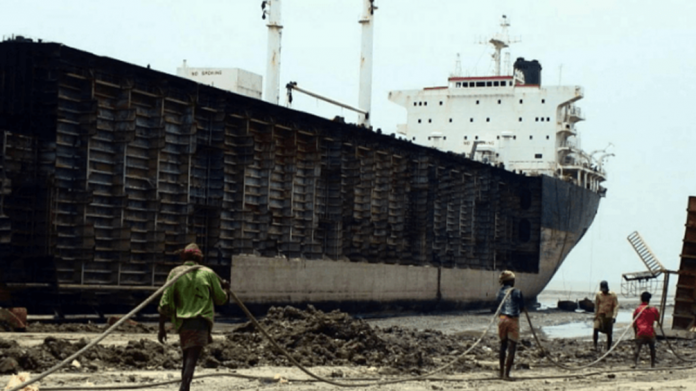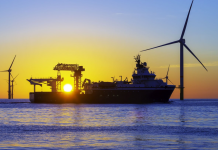
BIMCO is forecasting that as emission regulations tighten on the shipping industry the rate of ships sold for scrap is likely to more than double in the coming decade. The trade group says while reducing carbon emissions out of the smokestack will be a motivation along with the need for compliance with IMO regulations, recycling while contributing to the circular economy could also be a source of further emissions.
“Many older ships are expected to be recycled earlier than normal due to the ever-tighter limits on greenhouse gas emissions,” writes Niels Rasmussen, Chief Shipping Analyst at BIMCO. According to his calculations, more than 15,000 ships and 600 million dwt are therefore expected to be recycled between 2023 and 2032. BIMCO notes that this is more than twice the amount recycled in the previous ten years.
Over the past ten years, BIMCO reports that 7,780 ships, representing 285 million dwt were recycled. Most of the deadweight capacity recycled (60 percent) was built during the 1990s. In the next ten years, however, they forecast that ships built during the 2000s will be the main source of recycling.
Compared to the 1990s, more than double the deadweight capacity was built during the 2000s and will drive the expected increase in recycling. Deadweight capacity built during the 2010s increased by a further 65 percent, note BIMCO which could lead to even higher levels of recycling ten to twenty years from now.
Historically they highlight that about half of bulk, tanker, and container deadweight capacity has been recycled by the time the ships would have been 25 years old and 90 percent between 30 and 35 years old. The recent surge in the markets has however slowed this with most brokers reporting for example even rusty tankers and older, smaller boxships were commanding top dollar pricing in the secondhand market. Tankers continue to sell at record-high prices.
“If we apply this recycling pattern to the currently trading ships, we estimate that 15,000 ships and 600 million deadweight tonnes will be recycled between 2023 and 2032,” concludes Rasmussen.
Scrapping rates have been falling long-term meaning the industry could struggle to absorb the increased rush to the beach for old ships. Further, many of the traditional countries hosting the breaker yards are facing financial challenges. Merchants at Alang, India cited changes in the steel market as contributing to their long-term decline. Bangladesh and Pakistan each were in financial crisis limiting the ability to issue the letter of credit needed to buy tonnage. These issues could contribute to the rise of new facilities and approaches to recycling along with the increasing focus on the safety and environmental impact of the industry.
BIMCO is using the forecast to also call for the ratification and implementation of the Hong Kong International Convention for the Safe and Environmentally Sound Recycling of Ships. The convention was adopted in 2009 with the aim of reducing risks to human health, safety, and the environment. Last week the Bangladesh Government confirmed that the country will ratify the Hong Kong Convention, allowing for the convention to enter into force.
“The need for compliant facilities from the main recycling states such as India, Bangladesh, and Pakistan is critical due to the large number of ships expected to be recycled over the next 10 years,” said BIMCO Secretary General and CEO, David Loosley during his recent visit to Bangladesh. During the visit along with the Norwegian Shipping Association, the European Community Shipowners’ Association, and the International Chamber of Shipping, Bangladeshi government officials declared their intention.
During the past five years, BIMCO reports that India and Turkey have recycled 25 percent and 34 percent of ship deadweight capacity and number of ships respectively. Along with Bangladesh, the world’s largest ship recycling country, and Pakistan, these top four countries BIMCO says have recycled 96 percent of deadweight capacity and 77 percent of ships during the last five years.
Fortunately, says BIMCO, India and Turkey, which are two of the largest ship recycling countries, are also major steel producers with a high share of electric arc furnace use. Recycling steel in electric arc furnaces BIMCO says emits significantly less greenhouse gases than the production of crude steel. Therefore, ship recycling the trade group argues can play a key role in the circular economy.
Source – THE MARITIME EXECUTIVE




